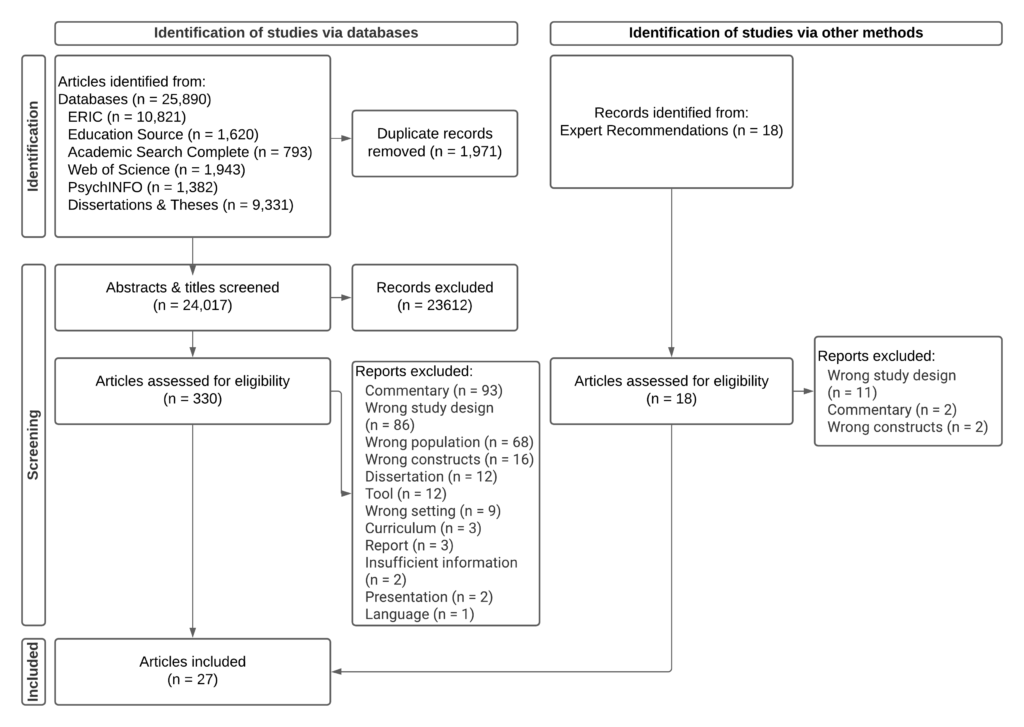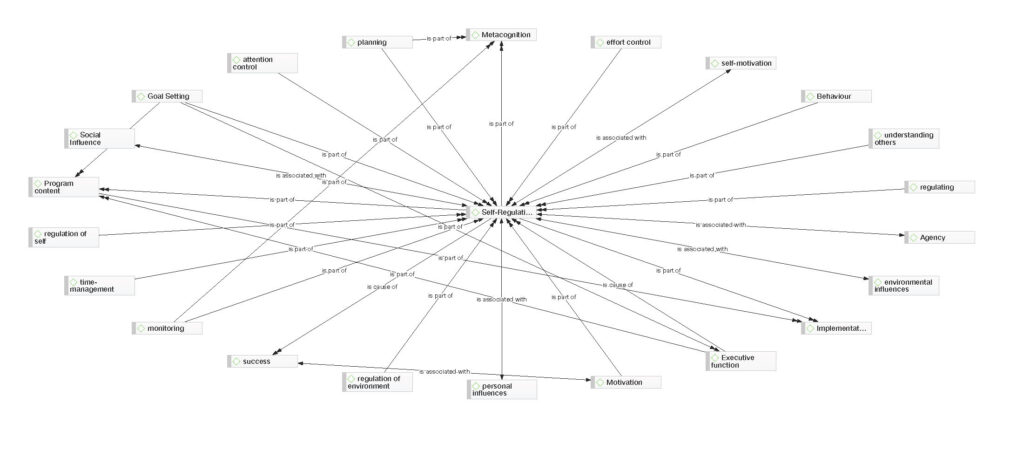Scoping Review Final Protocols
Yesterday I sent my scoping review chapter to my supervisor. With this milestone accomplished, I feel I have the bandwidth to begin sharing more of my research here again. With the pandemic, I’ve found it hard to engage in the research, let alone the blogging portion of it. However, with this new development, and possibly the nice weather we are having here in Ottawa, I am feeling much more motivated for both!
Today, I would like to begin taking you through the final protocols of the scoping review. In the following weeks, I will also begin sharing the findings from this phase of the research.
Recap on the SEL in Action Project
With the SEL in Action Project, I am exploring how social and emotional learning (SEL) is conceptualized and enacted within Canada through research, policy, and practice. Much of the research in this area has been conducted within the United States. Therefore, it is important to explore what is happening within the Canadian context.
The scoping review was chosen to explore how Canadian researchers are conceptualizing and implementing SEL within elementary schools. A scoping review allows for gaining an understanding of a concept or phenomenon. For more information on the rationale of a scoping review, check out the post on scoping review methodology.
Stage 1: The research question
The first step is developing a strong question for the review (i.e., developing an understanding through how questions; Arksey & O’Malley, 2005; Levac et al., 2010). So, the research question for phase two is stated as: How do researchers conceptualize and enact social and emotional learning within Canadian elementary schools?
The framing of the question in this manner provides three criteria for the ensuing literature search: (a) the research is conducted in Canadian elementary schools, (b) that we look at SEL competencies (i.e., self-awareness, self-management, social awareness, relationship building, and responsible decision making), (c) that there must be a clear implementation of an intervention to foster student’s SEL.
Stage 2: Identifying Relevant Studies
The next step is to develop the search strategy. This was done through collaboration between myself, my supervisor, and the faculty librarian. The search strategy protocol development included the initial search terms to include and outlining the relevant databases to search.
Key terms
After reading some systematic reviews on similar topics, we decided to keep a narrow focus on SEL and its variations (e.g., emotional learning). We also included each competency to be sure we included cast a wide enough net. However, we did not include any of the subsequent skills within the competencies. From these terms, we checked the thesaurus’ of each database to include the relevant Medical Subject Headings (MESH) terms (i.e., the related terms that the database used to refer to the concepts I was looking at). You can see each database and the terms used on my search strategy spreadsheet, here. You can see the guiding key terms in the table below.
We included terms related to the school and Canadian context.
| Databases | Terms | Location |
|---|---|---|
| ProQuest Dissertations & Theses | Social Emotional Learning | Canad* |
| ERIC | Social Learning | North West Territories |
| Education Source | Emotional Learning | British Columbia |
| Academic Search Complete | School | Ontario |
| Web of Science | Decision making | Alberta |
| PsychINFO | Self-awareness | Saskatchewan |
| Self-management | Manitoba | |
| Social awareness | Quebec | |
| Relationship building | Newfoundland | |
| Labrador | ||
| New Brunswick | ||
| Prince Edward Island | ||
| Nova Scotia | ||
| Yukon | ||
| Nunavut | ||
Timespan
As the term social and emotional learning was coined in 1994 by CASEL (Durlak et al., 2015), we set the time span from 1994 to the search date in February 2020.
Data Collection Procedures
Once the protocol was developed, I began to conduct the literature search. Using the advanced search function in each database, search terms were combined using the OR function within SEL terms, setting, and location separately. These categorical groupings were then combined using the AND function. Titles and abstracts were screened for search terms using the TI, AB functions within the databases. Terms were also explored outside titles and abstracts using the terms as keywords. Again, for the breakdown of the search terms, dates of collection, and other relevant information you can see the spreadsheet here.
When the searches were done, I downloaded the metadata for the articles as .RIS files to import into Zotero. Then once I had everything in the reference manager, I began uploading everything to Covidence for screening.
Stage 3: Study Selection
Once all meta-data was uploaded to Covidence, a collaborator and I began screening the Titles, Abstracts and Dates for inclusion. As we were screening the articles, we began to develop additional criteria to narrow our search. You can see these criteria in the table below. Through discussion with my supervisor, I also added the criterion that articles would be peer-reviewed. We felt this would be more representative of the consensus of how researchers within Canada were defining SEL.
| Inclusion Criteria | Exclusion Criteria |
|---|---|
| Elementary School Setting | Targetted/intensive interventions |
| Canada | Clinical/Specialized Populations |
| SEL | Non-Canadian Populations |
| Social Competencies | Publication Language other than English |
| Emotional Competencies | High School |
| English | University |
| Published after 1994 | Professional settings |
| Universal program implementation approach | Extracurricular Settings |
| Medical Education | |
| Nursing | |
| Coaching/sport | |
Inclusion and exclusion criteria developed for the scoping review of SEL in Canadian elementary schools
From this screening and subsequent full-text screening, we narrowed down the included articles to 27 articles. The below PRISMA chart shows this process.

PRISMA chart showing the process of the selection of articles included in the scoping review
Stage 4: Charting the Data
Once we were down to the 27 articles, I imported them into Atlas.ti to help me facilitate the analysis process. I analyzed the data were analyzed using a two-step qualitative approach. Specifically, data were coded using descriptive coding techniques (Saldana, 2016). Descriptive codes were chosen before the analysis process based on the research question. Specifically, the documents were coded for the year, the definition of SEL (or related construct), competency or skill focus, theoretical foundation, study goals, setting, methods, participants, grade focus, measures, intervention, outcomes, implications for practice, teacher’s role, administrator’s role, researcher’s role, and other’s role. Sections related to the mentioned descriptive codes were coded within Atlas.ti and summarized into a spreadsheet for visualizing each study as a unit and cross-exploration (you can find that spreadsheet here, Warning, it is a bit of a mess!). This spreadsheet was the primary source for analysis ccomplemented by the analysis and network diagrams I created in Atlas.ti.

Next Week
Next week, I will be sharing the initial descriptive data with you regarding the dates of publication, grade breakdowns, and foci of the articles. Today, I will also start analyzing the interviews to begin exploring how educators within Canada are conceptualizing and enacting SEL. I will begin sharing more on that later this month!
I welcome your feedback on this project as it evolves!
Any thoughts or feedback? Let me know in the comments below!
If you have any questions or would like more information, please feel free to email me at hwoods@uottawa.ca.
By participating in discussions through the comment section on this website, you consent to your participation in the study.
Please refrain from using any identifiable information (e.g., names, schools, locations). All posts will be screened prior to posting to ensure no identifiable information is being shared.
Please use a pseudonym for your name for all comments.


